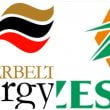The Copperbelt Energy Corporation (CEC) has observed that solar energy can be a workable solution for the country’s electricity crisis if all stakeholders put their efforts in growing the sector.
Speaking to journalists during a tour of the Corporation’s solar panel plant in Kitwe’s Riverside area, as part of the ongoing capacity building workshop for media practitioners, Tuesday, CEC Solar Project Development Engineer Hilton Fulele explained that Zambia’s energy sector had capacity to grow if the country decided to diversify into other sources of energy.
Fulele regretted that the country’s over dependence on hydro energy would become disastrous for citizens in an event that Zambia experienced poor rains or droughts.
“The solar technology is actually workable for Zambia. During the 2014/15 rainy season, we had poor rainfall at that period. If you remember after that season we actually had to experience a lot of load shedding because we had to manage our water in our dams and stuff like that. From that period, government called for a diversified energy production. Sources of power had to be diversified. One source of power that we’ve hardly used as a country is solar. We have a lot of hydro potential, but what happens if we have got droughts or poor rainfalls like it happened last time? Then we are going to suffer again and go into load shedding, which is essentially just trying to manage and ration that small amount of energy to everyone. But there is solar which is free, as long as you make that initial investment. Once the initial investment is done, it’s free power and we can utitlise it,” Fulele said.
“Zambia is in a region where we have so much solar potential. In a square meter area, you can get more than 1800 units in year. But how many of us use even 1800 units at home? Probably we use about 300 units each. So 1800 would take me six months to consume, but that is the amount of sunlight we receive in a square meter in Zambia. So there is a lot of potential that we have in terms of solar energy, it’s just the issue of making that investment. And with this government, the critical part is that government is also pushing for that. Let’s just diversify our sources of energy. We’ve also been looking at core, there are other people who have been producing power from coal within country and that too is something workable but the majority of free energy that we have is the sun and we are making use of it right here.”
During the tour of the the Riverside Solar one megawatt plant, Fulele explained how the Corporation generated its solar energy as well as how the energy was distributed to clients.
“So what we do is that we collect the energy that comes from the sun using the solar panels and the inverters. We then condition the energy from the sun, and by using the solar panels we get what is called as DC [Direct Current power]. We then convent it to alternating current power, which people typically use in homes for cooking, lighting and such kind of things. So at this location, we have 3,864 solar panels and each one of them gives you 270 watts. From the 3,864 solar panels, what we are getting is 1043 watts. The power that we get from here is simply added to the network. But in the network, it’s endless where it goes,” said Fulele.
“Essentially we say we are connecting to the CEC grid, but CEC is connected to Zesco and it supplies to the mines. CEC is also connected to the DRC, so where it goes is endless. But primarily, where we are connecting from, we have loads there. We have loads for CE itself because it’s connected to our sub stations where we operate from. Then we also have a few loads that go to CEC village, so the power generated here is consumed within before it is actually transmitted. But in an event that we don’t have loads there (at the solar panels), then it will go throughout the network, it may even reach people’s homes.”












